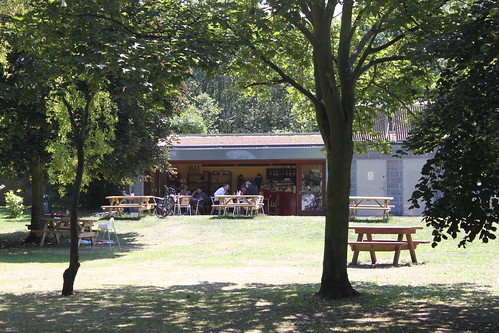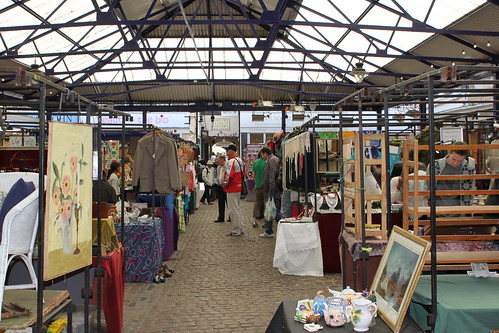HIGHLY-controversial plans to hold the Olympic horse events in Greenwich Park are opposed by almost 70 per cent of local residents, the first full-scale survey has found. The survey, by the London Assembly, is a serious blow to the Olympic organisers, who have always claimed – without any apparent evidence – that the horseriding event is popular.
John Fahy, Greenwich Council’s cabinet member for culture and the Olympics, said at a public meeting in March: “The Olympics in the Park have universal support.” Lord Coe, the chair of Locog, described opponents of the use of the Park as “minority voices.”
But nobody has actually known what local people think – until now. And it turns out that, in a less-than surprise development, both Greenwich Council and London 2012 have been talking out of their bottoms.
Almost 12,000 survey forms were posted or emailed to most households in the three Greenwich Council wards around the Park. 1,267 were returned – a very high response given that the respondents had to pay their own postage, and a bigger sample than in most professionally-conducted opinion polls.
Three neutrally-worded questions were asked:
1. Are you in favour of the equestrian event being held in Greenwich Park during the 2012 Olympics?
No – 68% Yes – 31% Don’t know – 1%
2. Have you received any communication from the Mayor or Locog about the possible impacts of the proposed venue within Greenwich Park?
No – 90% Yes- 10%
3. Have you been invited to or attended any public meetings regarding the equestrian competition to be held in Greenwich Park?
No – 78% Yes – 22%
Many respondents made heartfelt comments. “Our park is a rare haven of peace…I am horrified that such a short-term, temporary, status-ridden excitement can threaten the calm and spiritual nature of such a well-needed refuge for Londoners,” wrote one.
“I am fully in support of the Olympics generally, but… the changes required to Greenwich Park…seem disproportionate to the benefit of holding the event in the Park,” said another.
“There is clearly very strong feeling about this,” said Gareth Bacon, the Tory assembly member who co-ordinated the survey. “What it tells me is that Locog have not really attempted to connect at all with the people of Greenwich.”
Lord Coe will be questioned on the survey results by Assembly members today on a day which also sees the opening of London 2012’s temporary “consultation” exhibition in a vacant town centre shop (on College Approach, between Rhodes Bakery and the Admiral Hardy.)
However, the London Assembly survey provides a rather more thorough form of consultation than anything the exhibition could achieve.
The results underline, once again, the futility of Locog’s attempts to “engage” the public through what we can now safely say are unrepresentative pro-Games groups like the Greenwich Society, which yet again finds itself on the wrong end of public opinion.
As Bacon says: “In the eyes of local residents, the public consultation on the equestrian event has been woeful. Locog must understand that holding big public events or giving presentations to local societies is no substitute for trying to build a direct picture of the concerns of the majority of residents.” In an attack on the Greenwich Society, he says: “Chairs of conservation societies don’t necessarily represent the views of the wider populace.”
To be fair, however, Locog has now started direct communication with the public. More detailed plans have been published on its new Greenwich Park microsite and many households, mine included, last week received a duplicated letter from Lord Coe outlining the opportunity to “have your say” on the plans. More on that next week.
This sort of communication, according to Locog’s spokeswoman, Jacqui Brock-Doyle, is how public opinion can be turned round. “I’m not surprised by the survey result,” she said. “What we’ve been finding in our own surveys, which are being carried out at the moment, is a huge amount of misinformation – that trees will be cut down, the park closed for a year, and so on. When we sit down and talk to people, we will get a significant change in what they think.”
I disagree with Brock-Doyle: I think that most people are reacting not to the scare stories but to what the event really involves (a cumulative ten-month closure of most of the lower Park, total closure for at least a month, tree pruning, the risk of serious damage, great disruption to the neighbourhood, no legacy or other benefits whatever for Greenwich.)
It could also, of course, be argued that those who sent back their survey forms are not necessarily representative. Those who are angry with the plans would perhaps take more trouble to respond.
But what it does clearly show is what I have always believed, that active, motivated enthusiasm for the Games in the Park locally is very close to nil. Even those who do want them don’t really want them with much passion.
Whatever you think of the survey, it makes the worst possible backdrop for Locog’s planning application, expected within the month. They’d hoped that the opposition was going away. But it isn’t.

